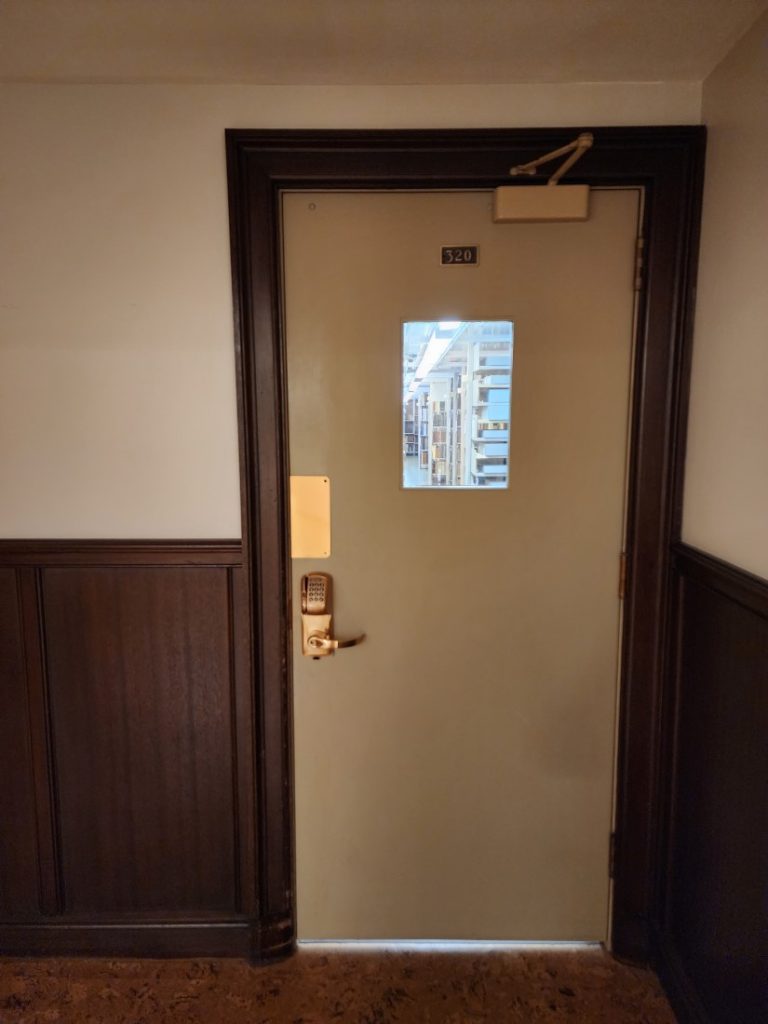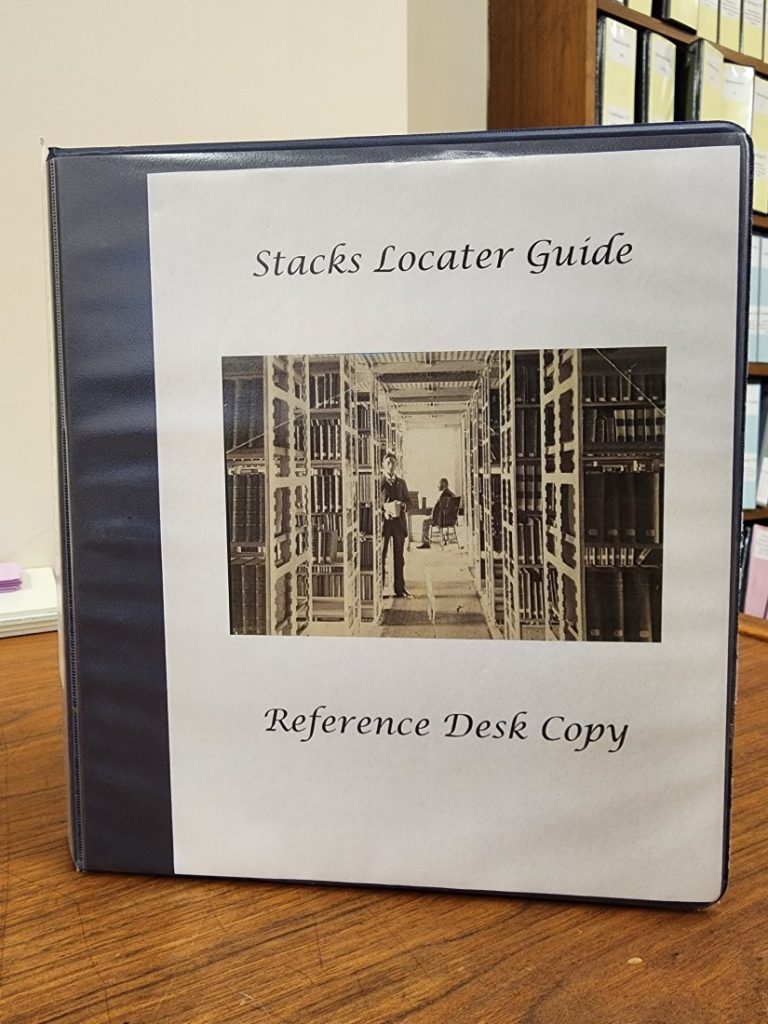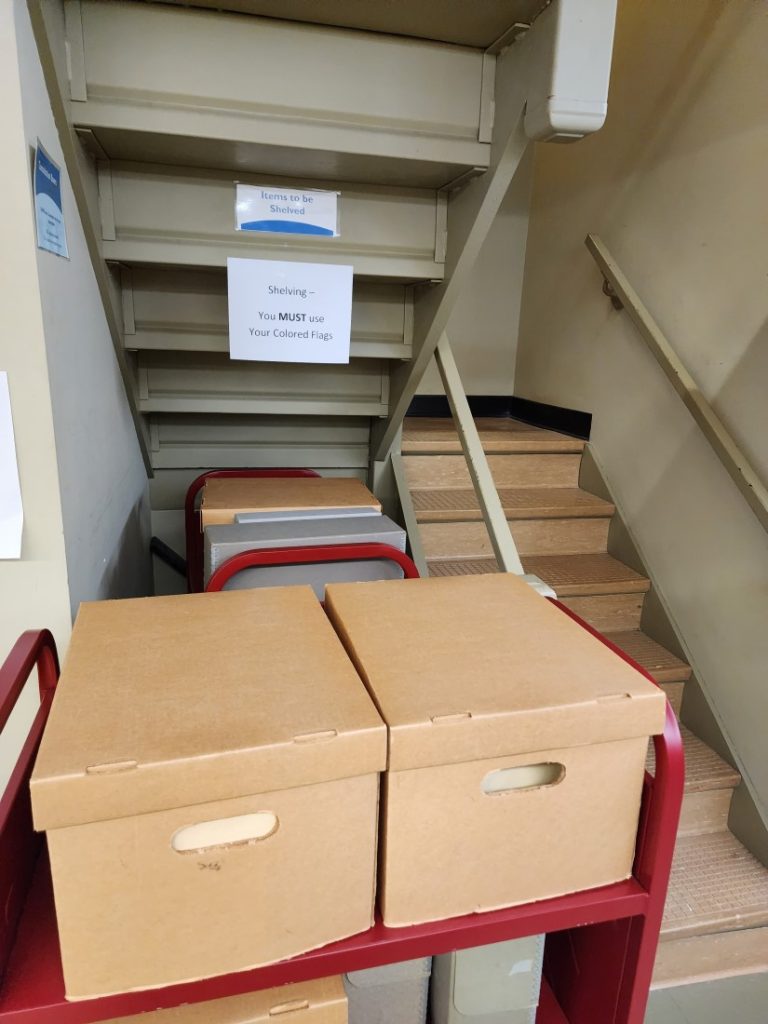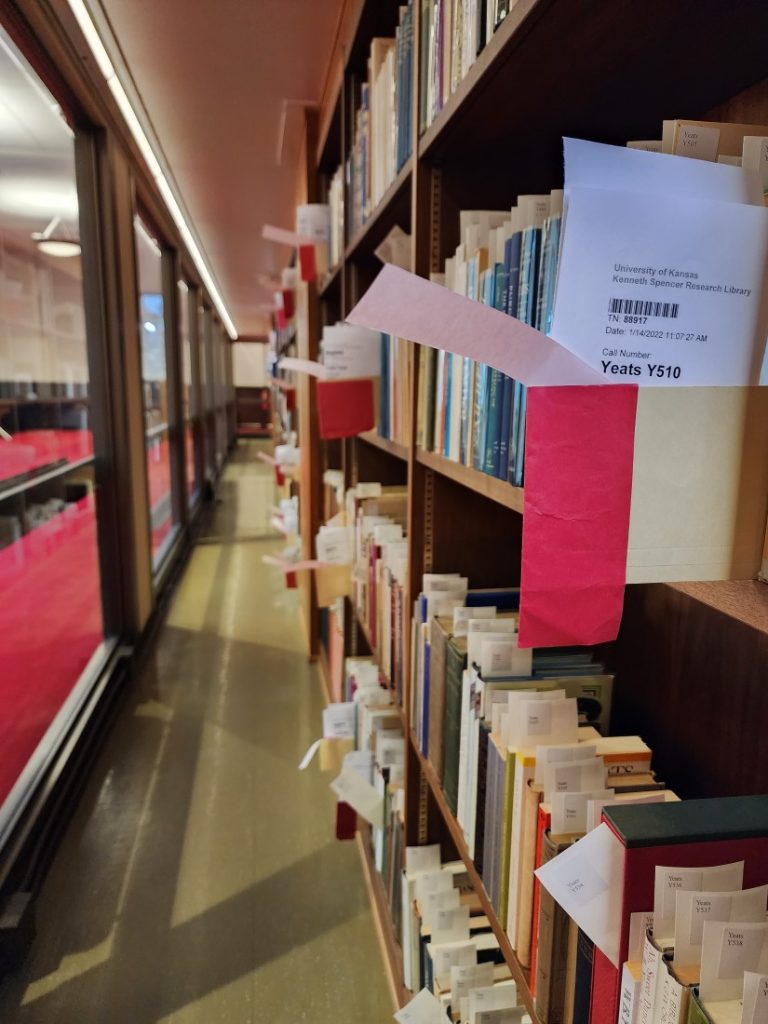Behind the Scenes at Spencer Library: Paging and Shelving
Visitors who have used collection materials in person at Spencer are familiar with the process: you create an Aeon account, check in at the reception desk, come into the Reading Room and check in with the librarian, and grab a table. Once that process has been completed, a student assistant (sometimes a staff member) goes into the stacks to retrieve your items and brings them to you.
While this seems like a simple process, many people outside of the library don’t really know what goes on behind the scenes. In fact, there are many internal processes in place to track each item’s every movement in the building and to ensure it is put back in the correct spot.
In today’s blog post we will discuss two related behind-the-scenes processes: paging and shelving. In short, paging refers to retrieving items from the stacks and shelving (sometimes referred to as re-shelving) deals with returning items to their appropriate place in the stacks. A majority of this work is done by our student workers, though staff contribute as well. Why don’t we have researchers page and shelve the materials they use? Well, with materials as distinct as ours, you can never be too careful. Spencer is a closed stacks library, which means that only staff members and student assistants are allowed to access secure collection storage areas known as the stacks. There are five levels of stacks throughout the building to house our materials. Additionally, as you may have seen in Marcella Huggard’s blog post from July 3rd, we use our own unique call number system within the stacks, and items are frequently shelved by size.

Paging
To begin paging, a call slip must first be printed. Once the call slip is printed and the item is marked as “being paged” in Aeon, the student uses our stacks locator guide to determine what room the item is in. The stacks locator guide is the document we use to indicate where every item in the collection is located. This detailed inventory, which is updated and revised frequently, helps staff keep track of where items are and when they have moved.
Once in the stacks, the student grabs a book truck and a charge-out flag. The student then goes through the stacks to the location of the item for retrieval. As the item is pulled off of the shelf, the charge-out flag containing one half of the call slip goes in its place on the shelf. You will notice in the photo below that the most essential parts of the call slip are the item name (title) and the call number. The other half of the call slip stays with the item. The item is then brought back to the Reading Room, marked as “checked out” in Aeon, and given to the patron.
Spencer staff members do not monitor Aeon requests as they come in; all paging is done when the patron arrives. Depending on the location and quantity of requests, paging can take anywhere from five to ten minutes.
Shelving
When a patron is done with an item, it is marked as “to be re-shelved” in Aeon and taken back to the stacks. Shelving is not done immediately. We have an area in the third-floor stacks where we place items to be re-shelved, and students work on it as they have down time.
When a student goes to shelve an item, they hope the student who paged it wrote the item location on that half of the call slip. If not, the student who is shelving must also use the stacks locator guide to determine where the item belongs. Once the location is determined, the student takes the item back to that spot. Before placing the item in the proper location, the student confirms that the two halves of the call slip – the one that remained on the shelf and the other that traveled with the item – match identically. If this is the case, the student puts the item back on the shelf and adds the second half of the call slip to the charge-out flag along with the student’s re-shelving flag. Each student’s re-shelving flag is a different color so staff can determine who shelved an item if something is done incorrectly.
After items are shelved, Spencer Operations Manager Meredith Phares goes through the aisles of the stacks and “revises” to double check that items are in the correct space. This is a whole other process that could use its own blog post.
Hopefully, this post helps patrons better understand the processes that happen behind the scenes when using the library. Everything that happens in the library has its own process that goes with it.
Tiffany McIntosh
Public Services
Tags: Behind the Scenes, Building Operations, Public Services, Shelving, Tiffany McIntosh






